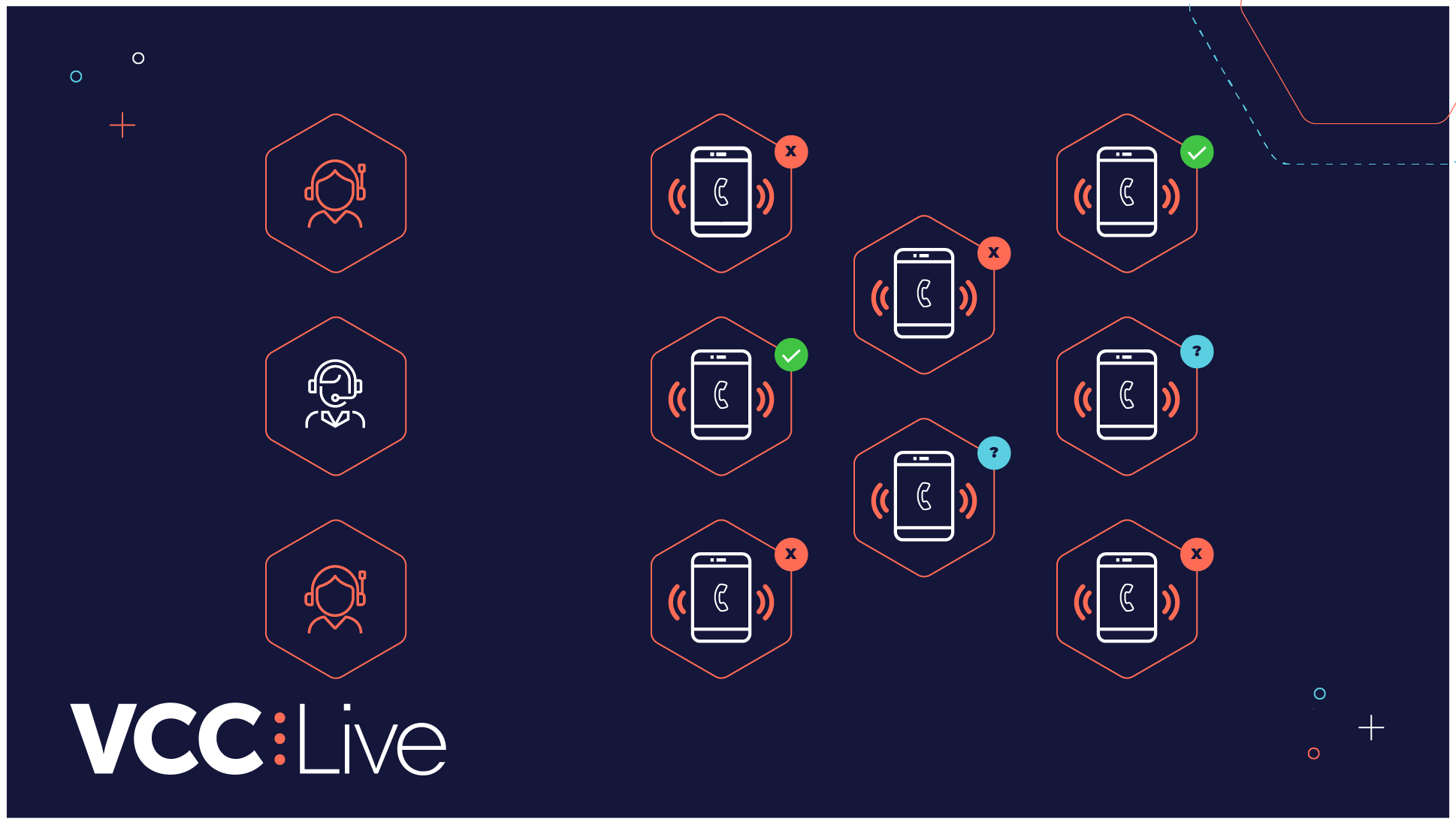Black Friday and Christmas are right around the corner. Many customers are already in the holiday spirit, buying Christmas presents while taking advantage of the huge discounts at the end of November.
This also means that for lots of businesses and their call centers, the winter peak season is associated with demanding customers, overtime, large amounts of inbound inquiries and unexpected horror stories like a website shutdown.
Luckily, there are various contact center software features that can help you prepare for the influx of calls and messages – in this article, we’ve included a few you should definitely consider when you plan for peak season.
1. Prepare a shareable peak season KPI dashboard
You’re probably analyzing your peak season data each year to see how your team and campaigns perform. Some contact center software solutions go beyond regular call center reporting capabilities and offer features that can help you prepare for the winter season in a few extra ways.
First, you can set up a KPI dashboard that is tailored to your goals during these busier times. Perhaps there are some peak season-specific metrics you’d like to keep a close eye on – luckily, there are systems that allow you to measure your own KPIs on top of the default ones. After you’ve set the unique formula, this KPI can appear on your dashboard, updating itself in real time. You can even organize these numbers with a drag-and-drop system and use color coding to see if you’re on the right track.
Second, make sure this dashboard is easily shareable with stakeholders and other departments even if they don’t have access to the software you’re using. For example, in VCC Live, you can share your KPI dashboard with external users as well, which makes it easy to discuss analytics with other teams.
2. Set up personalized IVR menus
To lift some weight off of your agents’ shoulders, you can prepare IVR menus tailored to each individual caller or to scenarios your business will likely encounter during peak season. For example, if your opening hours change during the holiday season, it might be a good idea to prepare an IVR you can use during out-of-office days, informing callers about when you’ll be back in business.
If your website tends to shut down from the influx of orders at the same time during Black Friday, you can also create an IVR message that informs callers about the estimated time until the issue is resolved.
For smoother order management, your IVR tree can even begin by checking if the caller has any ongoing orders at the moment, and if they do, the system can offer self-service options such as cancellation or delivery date inquiries and modifications. This solution lets people take care of their simple queries immediately while allowing agents to assist customers with more complex issues.
If Black Friday and Christmas tend to attract many international customers to your business, you may also want to consider reviewing your IVR’s language settings. Treating the company’s mother tongue as the default (and offering the English version only at the very end of the IVR greeting) might not be the best solution. Ideally, your system is able to filter caller IDs, transferring callers from foreign phone numbers to your English IVR menu – or one in their own language.
3. Take full advantage of your scripting tool
As mentioned above, seasonal greetings and IVR menus for likely scenarios will definitely come in handy during the winter peak season. Now’s also a good time to review your step-by-step guides. In particular, check if the materials are straightforward and easily understandable without company context in case you’re planning to hire external agents to help with the workload.
With the right scripting tool, agents can also access a wide range of tools while being on the call – this can be helpful when people inquire about specific product details, for example. If the customer’s address is available in the system, agents can even give them directions to your closest store without exiting the script.
Taking advantage of your call center scripting tool’s small time-saving features can also make a big difference in peak season. You can speed up the progression of the script by enabling an auto-go-next function so that agents don’t have to click the “Next” button each time. The way the script displays possible answers may also help: if you choose the radio group form instead of the dropdown menu, your team will see every possible answer immediately.
4. Double-check your integrations
If your contact center software is integrated with a CRM such as Salesforce or Hubspot, you’re probably already taking advantage of many useful features. Before the influx of queries start coming in, you can check if any additional functionalities should be introduced to your agents’ workflows to make things faster and smoother. You can also test how the features you’re already using work. For example, see if customer data actually gets updated right away, or if there’s some buffer time you need to inform your agents about to avoid unnecessary overwrites and misunderstandings.
If your social media platforms get a lot of messages during the winter peak season, maybe now’s the time to introduce an integration that can help agents manage interactions without leaving your contact center software’s interface. For instance, VCC Live offers a Facebook Messenger integration with plenty of useful features such as assigning and transferring messages between team members, performance tracking and message routing.
An excellent way to help agents sign contracts much faster and thus speed up paperwork is an integration with a solution for accepting electronic signatures A good example is well-known Docusign which eliminates the need for printing, scanning, email exchanges and in-person meetings and you can make it accessible directly in your contact center software.
5. Consider investing in AI
If keeping up with customer demands has always been challenging during peak season, perhaps it’s time to invest in a few AI capabilities.
You can explore AI voicebots that are capable of having natural, human-like conversations with your callers. These machine learning powered solutions can perform basic tasks and answer FAQs correctly, saving a lot of time for agents. In VCC Live, this capability is provided through a Dialogflow integration, which supports more than 90 languages.
For email inquiries, language detection can also be a life saver. This AI capability recognizes which language the message was written in and automatically routes it to an agent who speaks it. An auto response in the customer’s native language can also be sent, boosting CX and reducing response time.
Lastly, you might want to consider some form of sentiment analysis tool. This can come in handy if you’d like to give personalized offers to customers on the phone. The system analyzes conversations between agents and callers and gathers indicators that led to successful and unsuccessful offers. After some learning time, this capability can potentially make suggestions on what products or services agents should suggest to each customer.
6. Check your security settings
Safeguarding sensitive information, preventing unauthorized access, keeping voice files and customer data according to regulations and providing secure payment methods are just a few security measures that keep your contact center secure all year round.
To make sure none of the data privacy and security settings are overlooked in the hectic winter months ahead, check out our blog post for a comprehensive call center security checklist. This is perhaps even important if these more busy times mean a large number of temporary workers and contractors employed.
Are you ready?
We hope you found these suggestions useful and will have a successful peak season in your call center. For more tips, check out these blog posts as well:



















